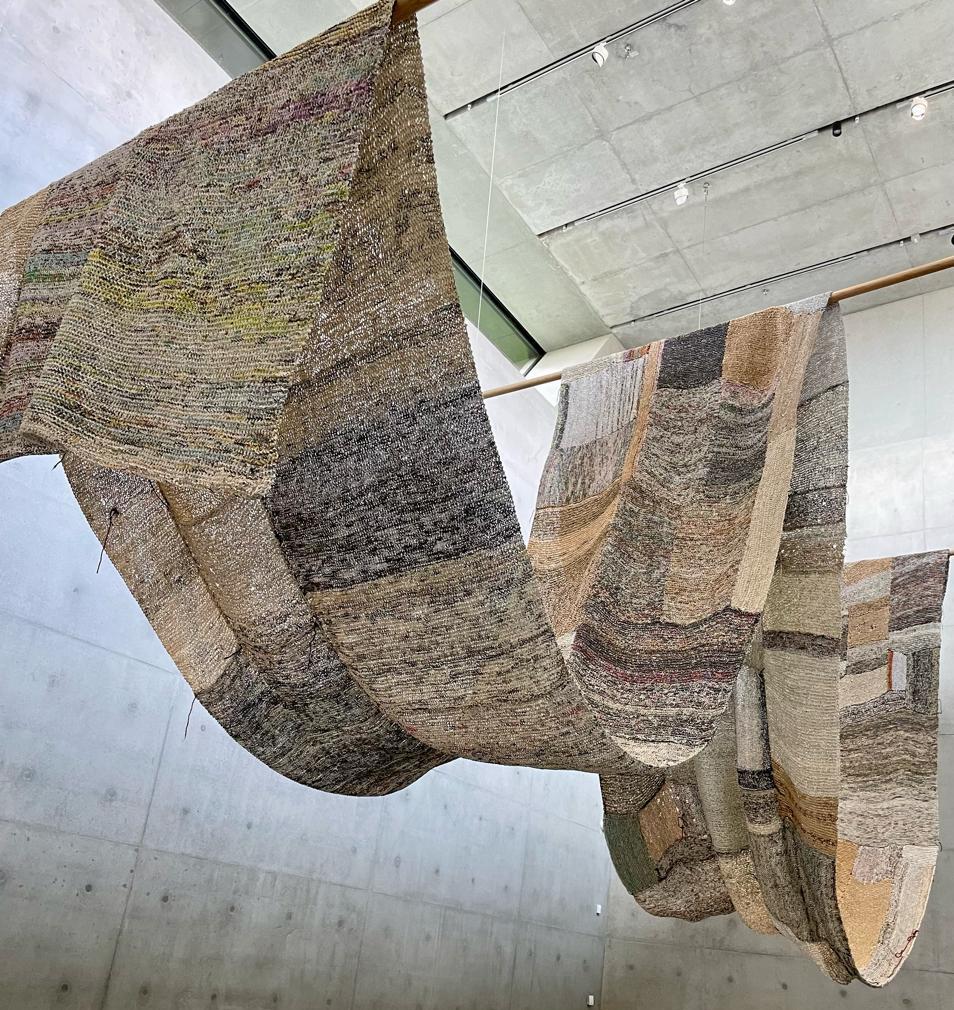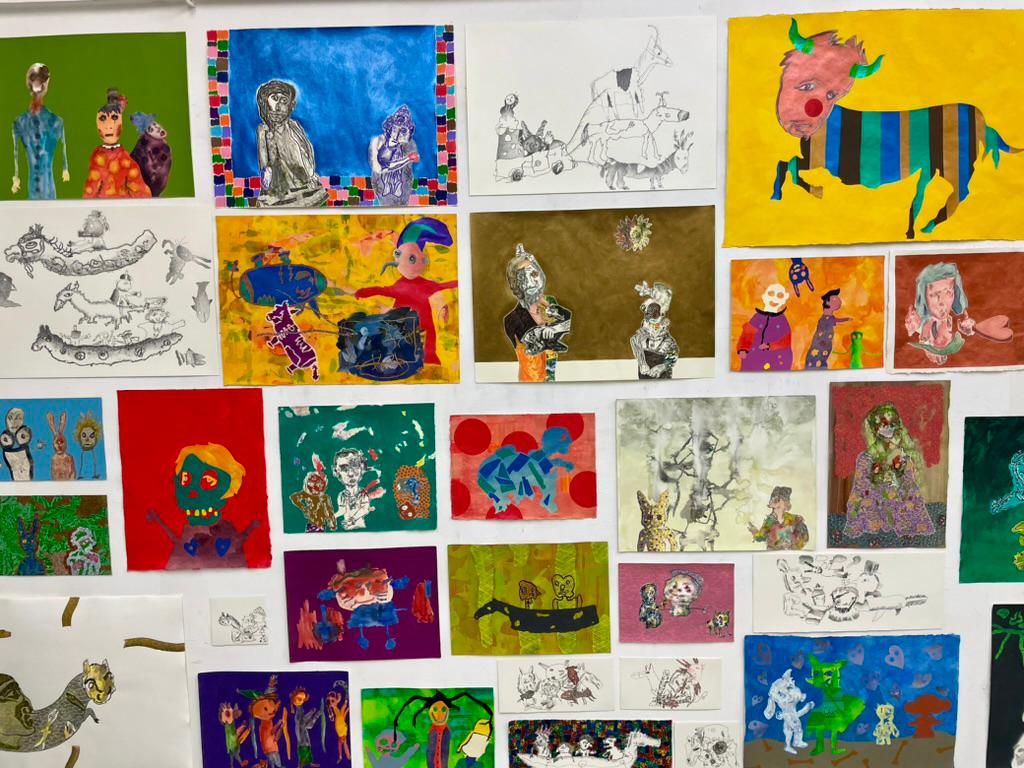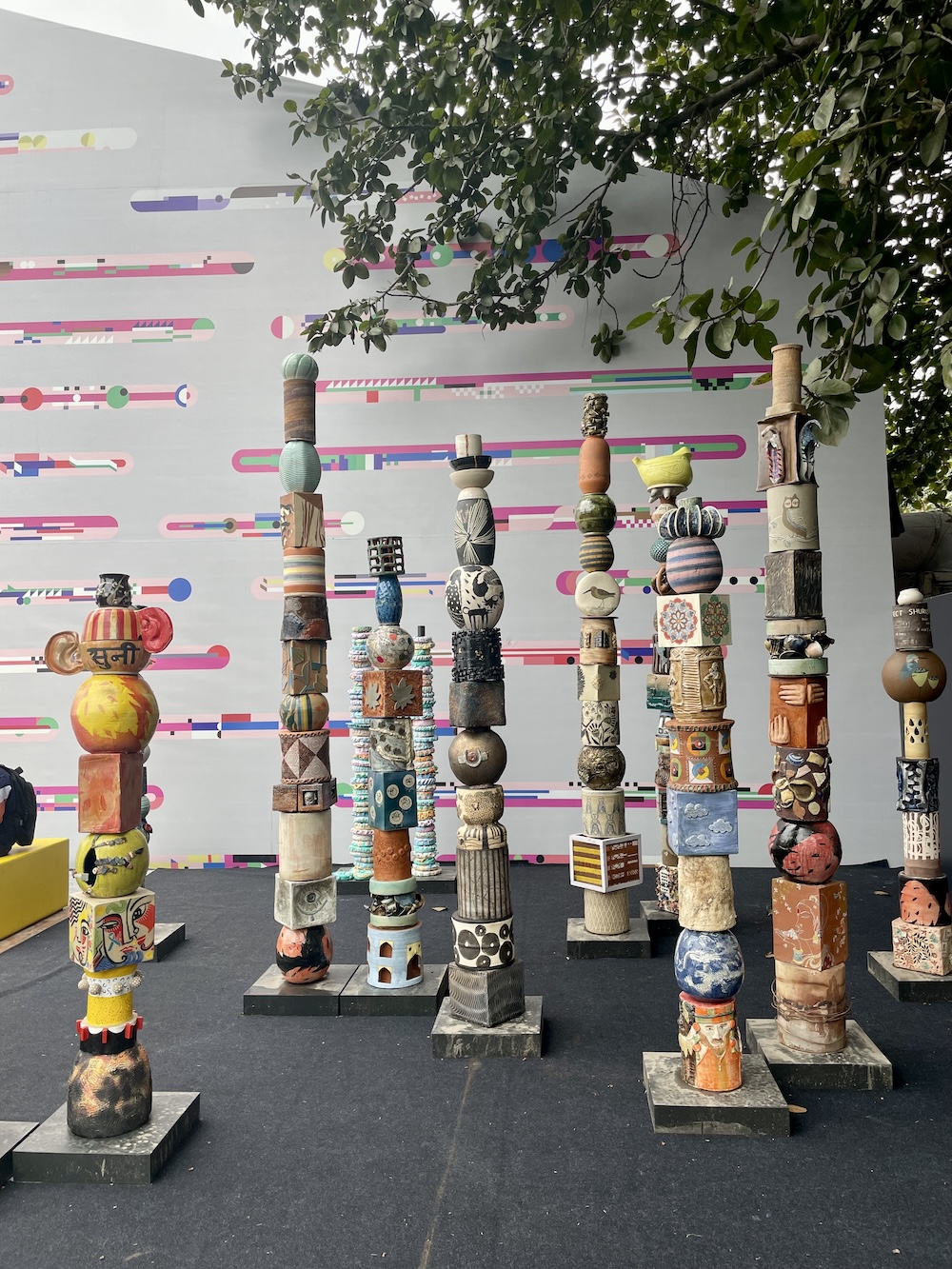Taschen Verlag published a new illustrated book on the work of Gio Ponti, which covers his complete oeuvre. In addition to the XXL illustrated book, a limited special edition, which will which will make the hearts of friends of Italian design beat faster, has also been published.
Gio Ponti was a multi-talented artist, which makes it difficult to find an element in his works that connects them and thus fit him into one category.
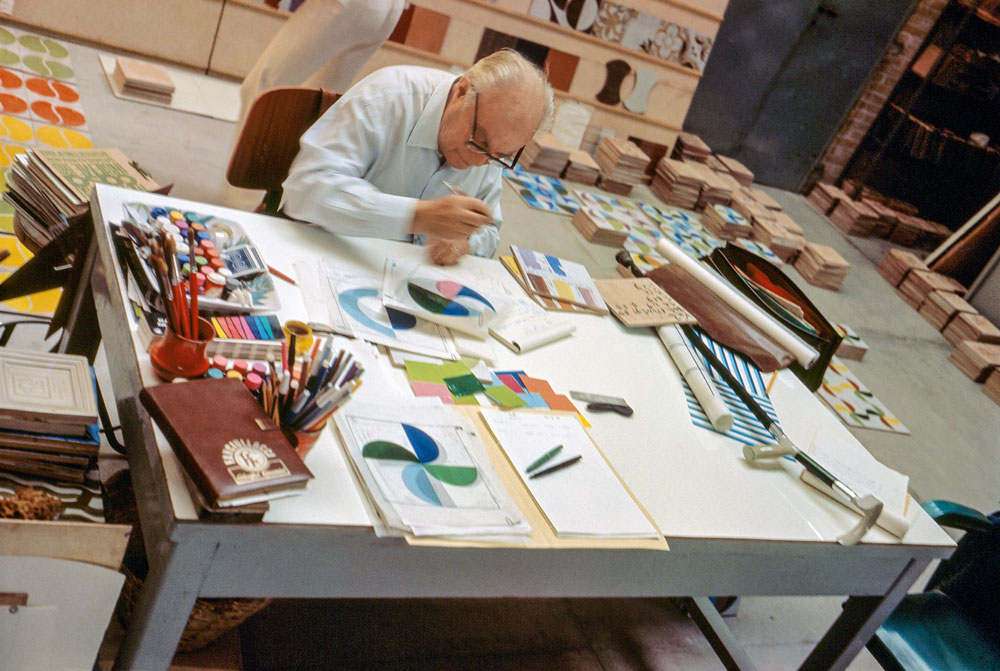
Photo © Gio Ponti Archives/ Historical Archive of Ponti’s Heirs.
For almost sixty years Gio Ponti, whose real name was Giovanni Ponti, designed the world with the greatest energy: Elegant skyscrapers, vases, tiles, armchairs, tables, chairs, breathtaking villas, cutlery, ship interiors, wall mosaics, sculptures, drawings … One could continue this even further and yet not capture the oeuvre of Gio Ponti in its entirety: In his designs one can find all the styles of the 20th century, in some cases he even anticipated trends. He was a poet, designer, industrial architect, architect and interior designer all at the same time. Thus, his concept of art is to be understood very broadly since he always went beyond the respective categories and so created a complex creative universe with his designs, in which upon closer inspection one also recognizes a clear, unified vision.
TASCHEN Verlag has now taken this as an opportunity to document the exceptional architect and his work in a massive book and the most comprehensive overview of his oeuvre to date. The book was produced in collaboration with the Gio Ponti Archive in Milan.
As readers turn the pages, they are immersed in a world of interiors, art objects, furniture, lighting fixtures, building plans, hotel entrances, cruise ships, and much more. Even the book cover itself is a reference to a well-known floor covering by Ponti from one of his most famous designs, the Pirelli skyscraper in Milan.

Photo © Gio Ponti Archives/ Salvatore Licitra.
The richly illustrated XXL book with about 136 projects shows Italy at Ponti’s time: progressive, self-confident and future-oriented. Like no other, Ponti, who was born in 1891, shaped the appearance of modern Italy. Berlin art director Karl Kolbitz, who many years worked with Mario Testino and Wolfgang Tilmans, has brought the works together in a detailed and fine collection with illustrations of buildings, projects and plans, so that the book, which weighs about 6 kg, does not seem so heavy at all and allows the viewer to float with ease through perhaps the most exciting times for design in the 20th century: Enthusiasm for technology and creativity come together with art and design history, so that one feels inspired and if not already – becomes a lover of Italian design. It is also particularly noteworthy that each object appears in the original context in which Ponti originally created it. In this way previously unpublished materials and unposed photographs allow new dialogues between well-known masterpieces and the less famous, but no less lesser-known works, revealing new insights into his elusive life.
But who was Gio Ponti anyway, or rather, who or what was he not? In the booklet of the illustrated book one can find some answers to this question: In the essay by Gio Ponti’s grandson Salvatore Licitra, founder of the Gio Ponti Archive and curator of the highly acclaimed exhibitions „Gio Ponti Archi-Designer“ (Museè des Arts Decoratifs in Paris 2018) and „Gio Ponti“ Loving Architecture“ (MAXXI Rome 2019), as well while reading the interview with his daughter Lisa Licitra Ponti, who died in 2019 and through a detailed biographical text, written by Stefano Casciani, longtime editor-in-chief of DOMUS Magazine, readers will get a good insight into Gio Ponti’s work and person.
He was a contemporary of the Bauhäusler, but unlike Walter Gropius for example, he was not a purist; the austerity of the latter’s architectural language was too boring and somewhat narrow-minded for him to see in it a new design. For him, both were important throughout his whole life: clear structure and decorative elements. He disliked the idea that only one of these should apply. His core philosophy of modernism therefore also saw architecture as a representational object and a „self-luminous“ stage for his humanistic art of living and boundless creativity.
Ponti loved colors such as blue, tan, and yellow, and he had a weakness for complex and iridescent surfaces as well as for the play of light and shadow on a façade. This still speaks to his modernity today: his facade designs, for example, would make a perfect background image for Instagram or a Tik-Tok video.
He always worked according to the principle of just not letting boredom arise in the designs.
Gio Ponti is generally seen as a trailblazer of modernism, but this is not entirely accurate and only represents an attempt to put his extensive body of work into one big bracket.
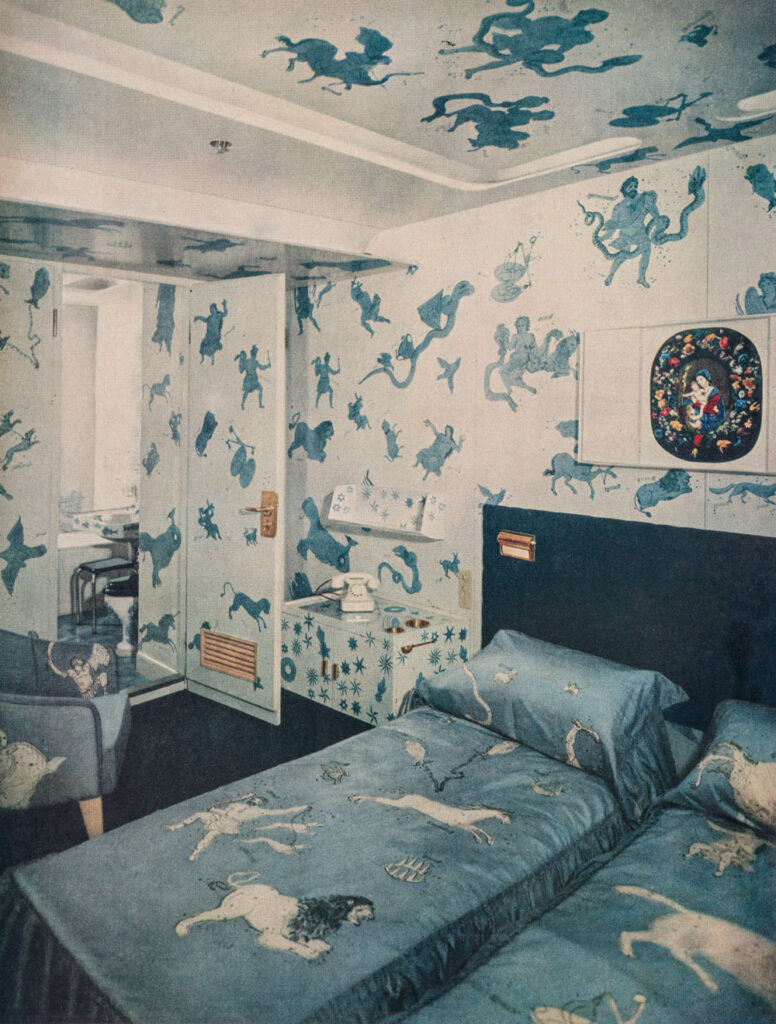
Colored photograph from an Andrea Doria advertising brochure. Ponti and Fornasett achieved a game of reversals with the blue-and-white pattern on pattern, engulfing the entire room and distorting spatial reading, but with an unexpected intimacy of enchantment.
Photo Courtesy Paolo Piccione Collection.
It seems better though to assume that Ponti did not want to create any (own) styles or models at all, but simply followed his „flow“, as one would say today. This is particularly evident in his best-known building, the Pirelli skyscraper in Milan with its streamlined basic form, the almost floating roof and the construction almost without supporting pillars. This design brought Ponti worldwide fame and he afterwards was commissioned to design everything from museums and churches to department stores. Along the way, he also designed objects such as the Pavoni coffee machine and the Superleggera chair.
In addition to his best-known designs, the book also contains smaller, less well-known works such as a playfully crazy suite on the luxury cruise ship „Andrea Doria“, which he designed with Piero Fornasetti in 1950.
Friends and acquaintances described Ponti as quick-witted, full of energy and enthusiasm. This is also evident in his work as a publisher, graphic designer and editor. Yes, Ponti was indeed a multi-talented man. He founded DOMUS, a magazine that is still renowned today, and curated STILE – all of which were opportunities for him to share his interests with a large audience.
For him, the future of architecture was closely linked to communication: As early as the 1920s, he conceived colorful mixes of themes for DOMUS: In addition to pure architecture, it was also about trade fairs, art exhibitions or photography. For Ponti, it was a matter of course that creative minds should help drive the changes in the modern world. A thought that can also apply to today’s viewers of Ponti’s work and should continue to inspire them.
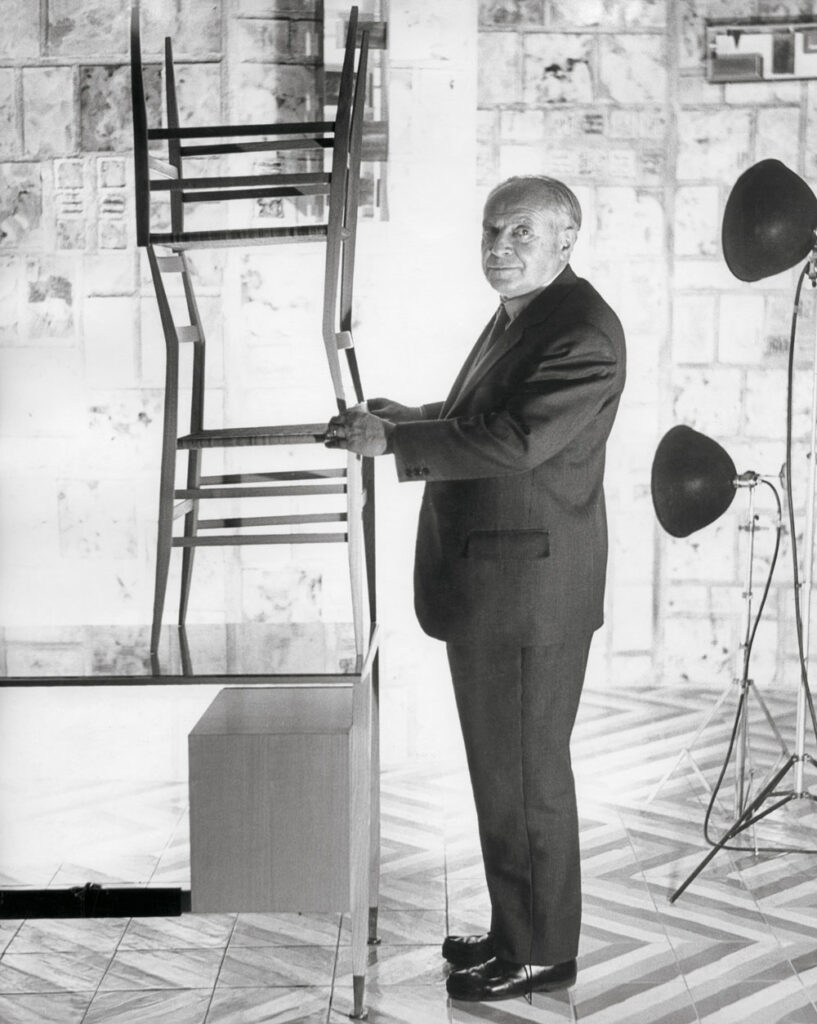
Photo © Gio Ponti Archives/ Historical Archive of Ponti’s Heirs (Photo Dan Wynn).
„Gio Ponti“ is released as an Art Edition in addition to the limited XXL edition, also limited to 1000 copies, which includes four art prints and a reproduction of the Arleccino – coffee table, originally designed by Ponti in the mid-1950s for Villa Planchart in Venenzuela and now re-produced in its original square format by Molteni & C. The Arleccino lattice coffee table is considered one of Ponti’s most iconic designs and can be seen as a playful quote from De Stijl artists typical of Ponti.
The prints are based on Ponti’s drawings from 1948-49, the originals are now kept at the CSAC Parma, to which the Ponti family has entrusted an extensive archive of drawings by the gifted draftsman Ponti.
Informations on the Book:
Gio Ponti
Salvatore Licitra, Stefano Casciani, Lisa Licitra Ponti, Brian Kish, Fabio Marino, Karl Kolbitz
Hardcover, 36 x 36 cm, 5.67 kg, 572 Pages
ISBN 978-3-8365-0135-4
Multi Language Edition: German, English, French, Italian
ISBN 978-3-8365-0134-7
Edition: Englisch
Famous First Edition: Numbered First Edition with 5000 copies (1.001-5000)
Gio Ponti. Art Edition
Salvatore Licitra, Stefano Casciani, Lisa Licitra Ponti, Brian Kish, Fabio Marino, Karl Kolbitz
Hardcover, 36 x 36 cm, 572 Pages,
exclusive with Table after the Design of Gio Ponti, 56,5 x 56,5 x 38 cm, and four Art-Prints, each 40 x 40 cm on Hahnemühle-Fine-Art Paper (Photo Rag Ultra Smooth 305/m2)
€ 3.000
ISBN 978-3-8365-8365-7 (German, English, French, Italian)
You can buy the book here: https://www.taschen.com/pages/de/catalogue/architecture/all/00357/facts.gio_ponti.htm

